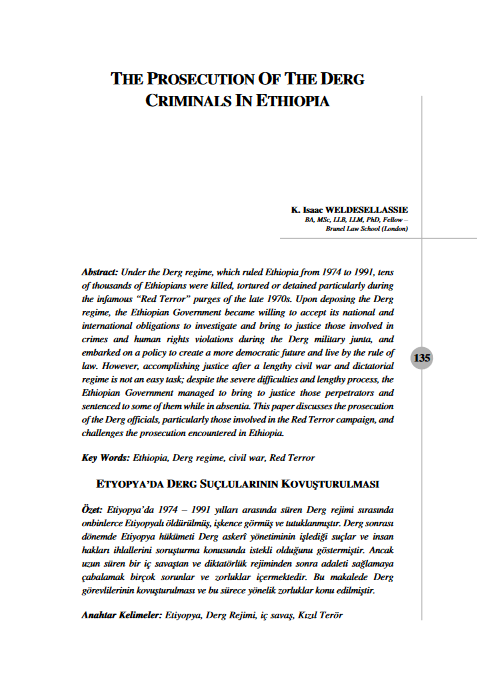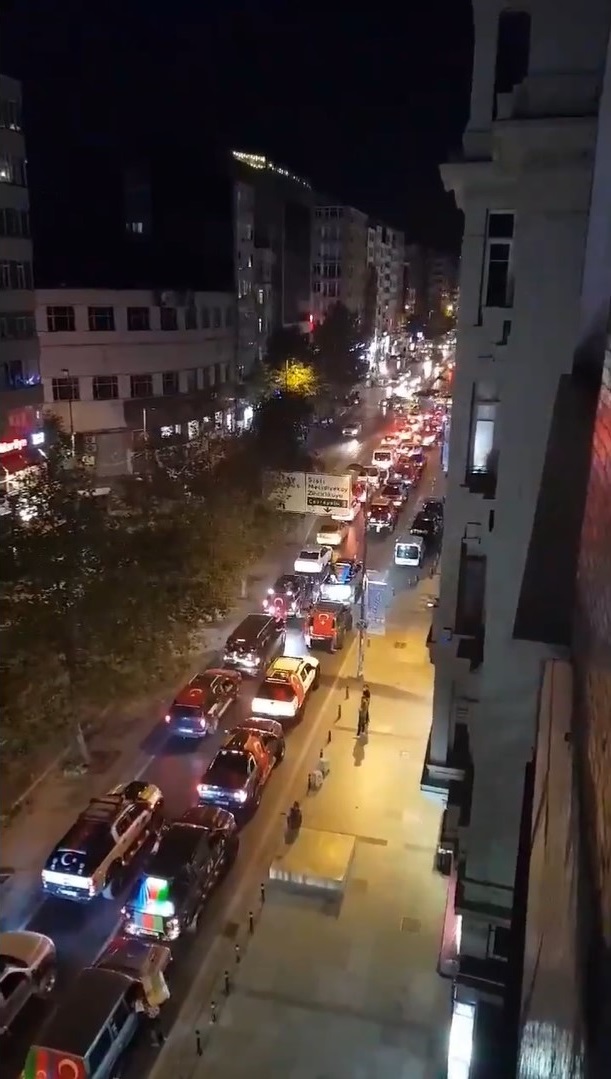
Since the outbreak of the wide-scale clashes between Azerbaijan and Armenia on 27 September due to the Nagorno-Karabakh conflict, we have witnessed the publication of a number of misleading or outright fake news targeting not only Azerbaijan, but also Turkey.[1] News reports with such problematic content seem to be especially prevalent amongst Western news outlets, which have been observed to give a lopsided coverage of the ongoing clashes between Azerbaijan and Armenia. This news coverage paints Armenia as the victim (despite its ongoing occupation of Azerbaijan’s internationally recognized territories) and Azerbaijan as the aggressor (despite the fact that it has limited its military operations solely within the scope of retaking its territories under Armenia’s occupation). Turkey, because of its support for Azerbaijan, is being painted as the aggressor as well.[2] A news report by France 24 titled “Turkish ultranationalists storm Armenian neighborhoods in Istanbul as fighting rages in Nagorno-Karabakh” seems to be the latest example of this Western media trend that either intentionally or unintentionally portrays Azerbaijan and Turkey in a negative light.
Before delving into the aforementioned news report, it will be beneficial to briefly introduce France 24 and its The Observers program. France 24 is a French state-owned international news television network based in Paris broadcasting in French, English, Arabic, and Spanish. It is the French equivalent of the British BBC World News and German Deutsche Welle. France 24-The Observers program is said to be both a website and a TV show focusing on international news. According to the program’s website, it aims to “cover international current affairs by using eyewitness accounts from ‘Observers’ - that's to say people who are at the heart of an event. They send us photos and videos, which our team of professional journalists in Paris verify and contextualize.”[3] It is further stated that: “Our journalists analyze and verify photographs and videos that have been widely shared online, but that may have been faked, manipulated or taken out of context.”[emphasis added]
On the website of France 24-The Observers, a news report was published on 15 October under the section of “separatism” with the title “Turkish ultranationalists storm Armenian neighborhoods in Istanbul as fighting rages in Nagorno-Karabakh.”[emphasis added][4] The report was also included in the French 24 Twitter account. It contains an image said to be taken from a video posted on Twitter on 5 October. The subtitle of the image states that it is “showing a group of Turkish ultra-nationalists storming Kurtulus, a neighborhood in Istanbul that is home to a large Armenian population.” The report mentions that “The cars are draped with Azeri and Turkish flags. The scene took place on Halaskargazi Avenue, one of Istanbul’s main roads.”
The report additionally mentions that “On September 28, the day after fighting broke out in Nagorno-Karabakh, a similar convoy drove into Kumkapi, another Armenian neighbourhood in Istanbul where the Armenian Patriarchate is located,” and states that two Armenian churches in İstanbul were vandalized in May 2020.
Before getting into the criticisms of the wording and content of this report, an important disclaimer must be made here to prevent misunderstandings. Ordinary people or citizens of any country, regardless of their background, ethnicity, or religion, should never be targeted in any way for political or military conflicts that they have no control over. This is a moral imperative that applies to everyone.
Getting back to report by France 24/The Observers, it has several problematic aspects that must be discussed:
1) The punch line of the report’s message is hidden in the word “storm”. In the context of this news report, the dictionary meaning of the word “storm” is: “a violent assault on a defended position.”[5] Despite the wording in the report’s title and text, watching the video concerning Halaskargazi Avenue reveals that no violent attack actually occurs; as in, no one is attacking people’s homes or businesses, or shouting discriminatory chants against Turkish Armenians. As such, the word “storm” cannot be used in this context and its use constitutes sensationalist journalism.
2) In the context of the Halaskargazi Avenue convoy, there are indeed many Turkish Armenians living in the Kurtuluş neighborhood, which is in the Şişli district that also contains the Halaskargazi Avenue that the car convoy passes through in the video. However, the Şişli district is one of the most central areas in Istanbul, which is a cosmopolitan megacity with a population of 16 million. Şişli has registered population of about 300,000, but is estimated to have a daily population of over three million, since it is not just a popular residential and commercial area, but also a hotspot for entertainment venues and hotels providing accommodation for tourists.[6] Furthermore, the Halaskargazi Avenue is one of the main arteries for Istanbul’s traffic flow. In such a megacity, it is misleading to label any district or neighborhood as an “Armenian neighborhood”, considering that the population of the Turkish Armenians (most of whom live in Istanbul) is about 60,000. In such a context, the authors of the news report have portrayed the convoy as targeting Turkish Armenians without providing convincing evidence.
3) In the context of the Halaskargazi Avenue convoy, the word “ultranationalism” has been used based on assumptions and without giving thought to the meaning of this word. “Ultranationalism” means “radical loyalty and devotion to a nation: extreme nationalism”[emphasis added][7] or “extreme nationalism that promotes the interests of one state or people above all others”.[8] A person draping their vehicle in a county’s flags and protesting about a political issue may signify that s/he is a nationalist, but this action alone is not enough to consider someone as ultranationalist, meaning that person is radical or prone to extremist actions. If we are to apply France 24’s assumptions elsewhere, then the Armenian groups waving the flags of Armenia and the illegitimate Armenian regime in Nagorno-Karabakh and protesting in front the European Parliament[9] in Brussels or shutting down Belgian motorways[10] must also be considered ultranationalist. After all, these protestors seem to be highlighting the supremacy of the Armenian cause in the Nagorno-Karabakh conflict and place the entire blame of this conflict on Azerbaijanis and Turks. Would France 24 be willing to label these Armenian protestors as ultranationalist?
4) The convoy that passed through the Kumkapı neighborhood of the Fatih District is a separate matter. Unlike Kurtuluş/Şişli, Kumkapı is neither a popular nor a central place in Istanbul. Furthermore, the Armenian Patriarchate of Istanbul is located in this neighborhood. In this context, the convoy’s passage by the Patriarchate can be interpreted as “sending a message” to Turkish Armenians, which makes this an act that must be denounced. Indeed, in the same day (28 September), Turkey's ruling Justice and Development Party’s spokesperson Ömer Çelik made a to the point statement:
“We strongly condemn Armenia’s attack against Azerbaijan. We will continue to stand against this unfair and illegal act. We will never allow the Armenian citizens of the Republic of Turkey to be threatened or harassed by anyone either through social media or other venues. […] The Republic of Turkey will not allow discrimination amongst its citizens. Whatever the reason might be, those who are trying to engage in discrimination amongst our citizens are those who wish to do harm to our country. Those who are trying to shift our resolute stand against Armenia to other areas are seeking to engage in provocation. No one can engage in provocation against the social fabric of Turkey. […]”[11]
The fact that France 24-The Observers omitted this important official statement by the Turkish government raises question marks about France 24-The Observers’ motivations for preparing its news report.
5) The news report by France 24-The Observers lastly mentions the vandalization of two Armenian churches in İstanbul. However, it seems that France 24-The Observers journalist have failed to follow up on these two incidents, as the perpetrators of both incidents have been apprehended and incarcerated. The vandalizer of the Armenian Church in Üsküdar was handed a 1-year and 4-months prison sentence for the crime of “damaging places of worship and cemeteries”. The vandalizer of the Armenian Church in Bakırköy is reportedly mentally unstable and his trial seems to have not been finalized yet. The omission of such facts by France 24-The Observers will lead the average reader to assume that people can casually stroll up to Armenian churches in Turkey’s largest city and vandalize them without consequence. France 24-The Observers’ omission is even more glaring since even Armenia’s news outlets (despite being traditionally anti-Turkey) have reported on developments concerning these two incidents.[12] One Armenian media outlet even shared Turkish authorities’ assessment on these incidents; “Concerning the goal of these sensational actions that were perpetrated within the same period, Turkish intelligence units ‘are of the view that [these actions] are being directed by dark hands trying cause great chaos in the country’.”[13]
France 24-The Observers claims to place importance on verifying stories and giving correct context to provide accurate news to its readers. It even has a section on debunked stories on its website.[14] Furthermore, France 24 claims in its “Fight the Fake” section that it is “[…] dedicated to providing news that is based on facts. Impartial, factual reporting is the best weapon against all kinds of fake news: rumour, propaganda and clickbait.”[15]
BBC provides explanations for two possible forms of fake news. One of them pertains to France 24-The Observers’ news report:
“Stories that may have some truth to them, but they're not completely accurate. This is because the people writing them - for example, journalists or bloggers - don't check all of the facts before publishing the story, or they might exaggerate some of it.”[16]
In the case at hand, France 24-The Observers, either through sloppy journalism or ill intent, has prepared a “news report” that omits important facts, fails to provide proper context, and uses exaggerations that in sum mislead its readers. In other words, this news report by France 24-The Observers constitutes a fake news. This is even more disturbing considering that France 24 boasts about “fighting the fake”. Fake news is rapidly becoming a global problem with serious political and social consequences. The constant propagation of fake news is eroding people’s trust in social institutions, politics in general, and journalism, which is profoundly dangerous because such distrust and eventual paranoia will the pave the way towards radicalization. In this context, fake news by a news organ claiming to fight fake news is the last thing the world needs right now.
*Cover photo: The convoy that passed through the Halaskargazi Avenue in Şişli/İstanbul - Source: Halit Kalelioğlu, personal Twitter account, October 5, 2020, accessed October 20, 2020, https://twitter.com/HalitKalelioglu/status/1313188249041592320
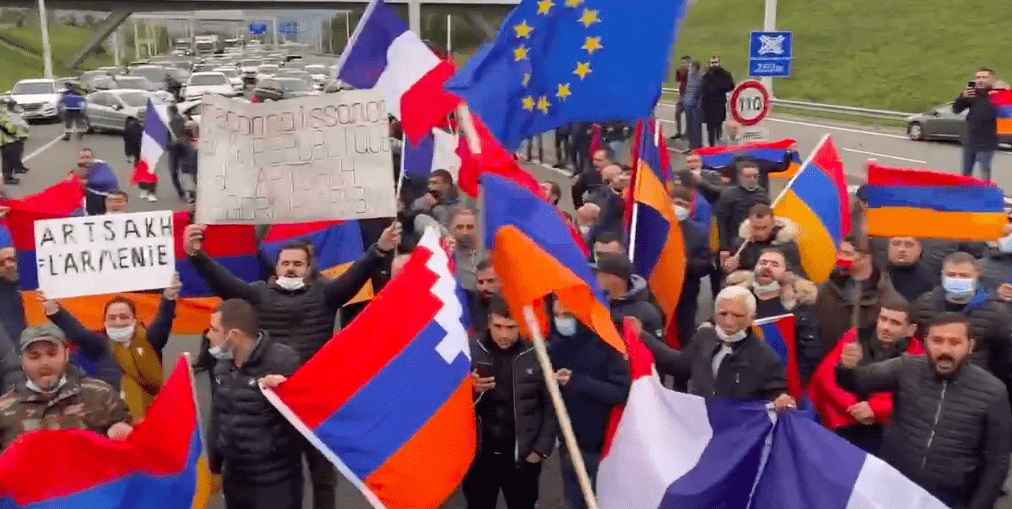
Armenian protestors block a Belgian motorway to draw attention to their views on the clashes between Azerbaijan and Armenia over the Nagorno-Karabakh conflict - Source: The Brussels Times
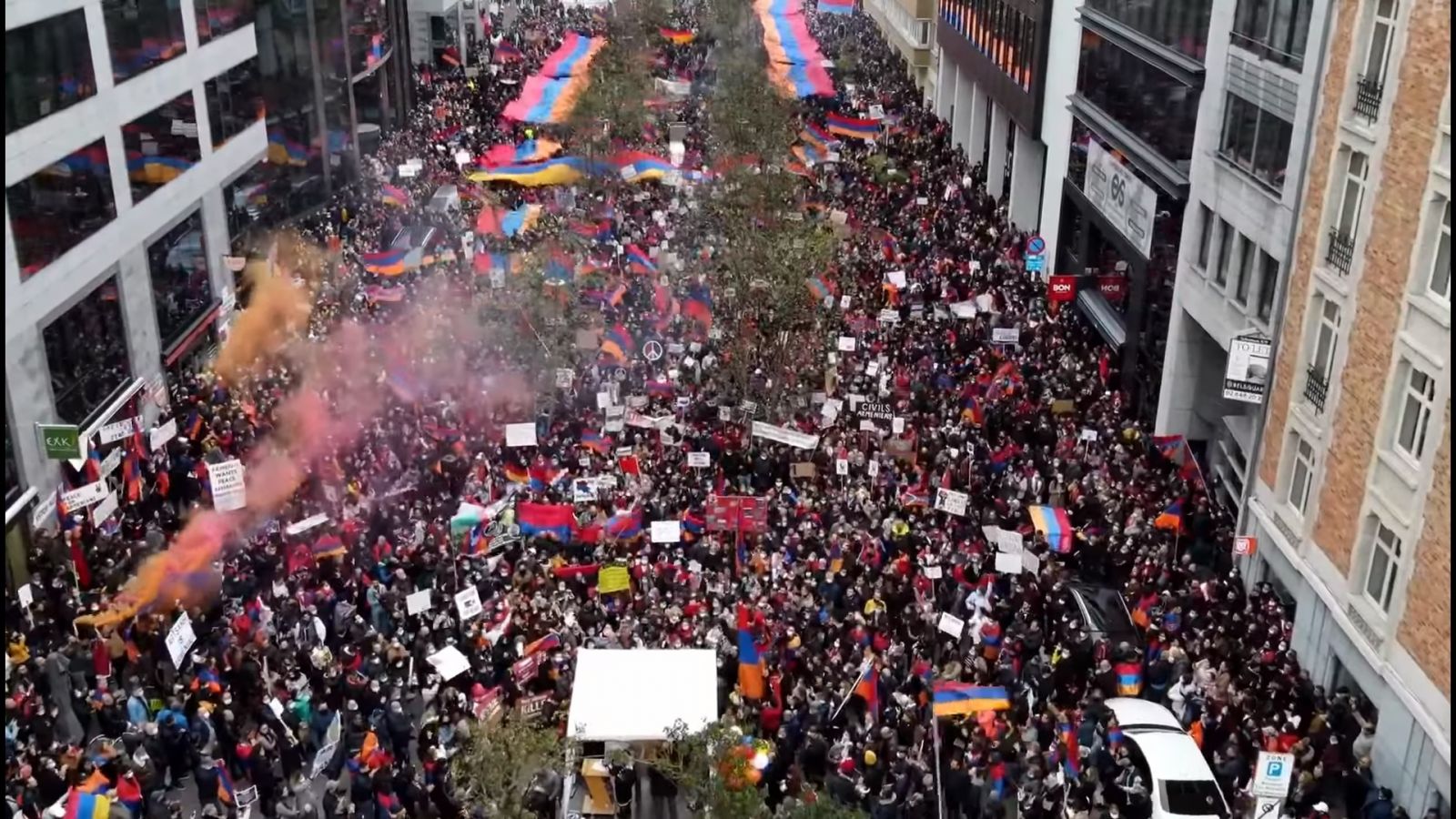
Armenian groups holding a demonstration in Brussels to draw attention to their views on the clashes between Azerbaijan and Armenia over the Nagorno-Karabakh conflict - Source: ArmenPress
[1] For example, please see; Hazel Çağan Elbir, “EU Observer and Fake News”, Center for Eurasian Studies (AVİM), Commentary No: 2020/34, October 13, 2020, https://avim.org.tr/en/Yorum/EU-OBSERVER-AND-FAKE-NEWS
[2] There may be several reasons for this unfair coverage. One reason might be Turkey’s currently strained relations with the United States and the European Union over political differences on key regional developments and the West’s aversion to what it has historically viewed as the “adversarial Muslim Turk”. Another reason might be the intense lobbying of well-established diaspora Armenian groups in various Western countries, especially in the United States and France.
[3] “About the Observers,” France 24-The Observers, accessed October 19, 2020, https://observers.france24.com/en/static/about
[4] Djamel Belayachi, “Turkish ultranationalists storm Armenian neighborhoods in Istanbul,” France 24-The Observers, October 15, 2020, https://observers.france24.com/en/20201015-turkish-ultranationalists-storm-armenian-neighborhoods-istanbul-fighting-rages-nago
[5] “Storm”, Meriam-Webster, accessed October 19, 2020, https://www.merriam-webster.com/dictionary/storm
[6] “Nüfus Durumu”, T.C. Şişli Kaymakamlığı, erişim tarihi: 19 Ekim 2020, http://www.sisli.gov.tr/nufus-durumu
[7] “Ultranationalism”, Meriam-Webster, accessed October 19, 2020, https://www.merriam-webster.com/dictionary/ultranationalism
[8] “Ultranationalism”, Lexico by Oxford, accessed October 19, 2020, https://www.lexico.com/en/definition/ultranationalism
[9] Aneta Harutyunyan, “Armenians in Brussels hold protest against Azerbaijan and Turkey, expect concrete actions from EP”, ArmenPress, October 7, 2020, https://armenpress.am/eng/news/1030691.html?
[10] “Nagorno-Karabakh: Armenians block Belgian motorways to protest escalating conflict”, The Brussels Times, October 16, 2020, https://www.brusselstimes.com/belgium/136028/nagorno-karabakh-armenians-block-belgian-motorways-to-protest-escalating-conflict-interstates-border-crossings-blocked/
[11] Sefa Şahin, “AK Parti Sözcüsü Çelik: Ermenistan'a karşı duruşumuzu başka alanlara sevk etmek isteyenler provokasyon peşinde”, Anadolu Ajansı, 28 Eylül 2020, https://www.aa.com.tr/tr/azerbaycan-cephe-hatti/ak-parti-sozcusu-celik-ermenistana-karsi-durusumuzu-baska-alanlara-sevk-etmek-isteyenler-provokasyon-pesinde/1988826 . Also see Ömer Çelik’s official Twitter account: https://twitter.com/omerrcelik/status/1310658214422339586
[12] “İstanbul’da Ermeni kilisesinin haçını söken sanığa hapis cezası”, Ermenistan Kamu Radyosu, 30 Temmuz 2020, https://tr.armradio.am/2020/07/30/istanbulda-ermeni-kilisesinin-hacini-soken-saniga-hapis-cezasi/ ; “Bakırköy'deki Ermeni kilisesinin kapısını yakmaya çalışan saldırgan tutuklandı”, Ermeni Haber Ajansı, 17 Haziran 2020, https://www.ermenihaber.am/tr/news/2020/06/17/Bak%C4%B1rk%C3%B6y-Ermeni-kilise/186003
[13] “Bakırköy'deki Ermeni kilisesinin kapısını yakmaya çalışan saldırgan tutuklandı”.
[14] “debunked”, France 24-The Observers, accessed October 19, 2020, https://observers.france24.com/en/tag/debunked
[15] “Fight the fake”, France 24, accessed October 19, 2020, https://www.france24.com/en/fight-the-fake
[16] “Fake news: What is it? And how to spot it”, BBC, May 17, 2019, https://www.bbc.co.uk/newsround/38906931
© 2009-2025 Center for Eurasian Studies (AVİM) All Rights Reserved
No comments yet.
-
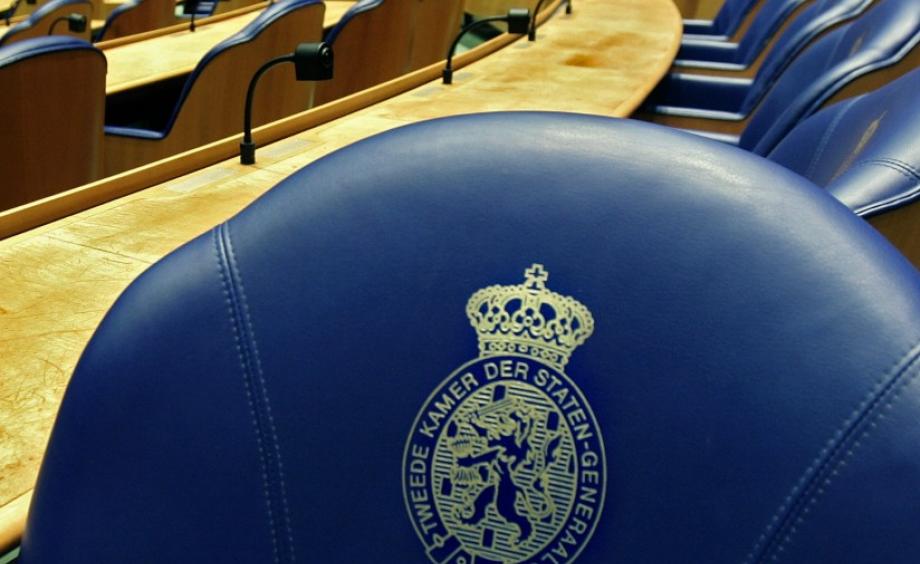 THE DUTCH PARLIAMENT’S FEBRUARY 22 DECISION ON THE 1915 EVENTS
THE DUTCH PARLIAMENT’S FEBRUARY 22 DECISION ON THE 1915 EVENTS
Mehmet Oğuzhan TULUN 22.02.2018 -
 FRANCE 24-THE OBSERVERS PROGRAMME AND FAKE NEWS
FRANCE 24-THE OBSERVERS PROGRAMME AND FAKE NEWS
Mehmet Oğuzhan TULUN 20.10.2020 -
 CHURCH INTERFERENCE IN ARMENIA’S NORMALIZATION POLICIES
CHURCH INTERFERENCE IN ARMENIA’S NORMALIZATION POLICIES
Mehmet Oğuzhan TULUN 14.08.2024 -
 CHAPTER BY CHAPTER SYNOPSIS AND REVIEW OF TURKS AND ARMENIANS: NATIONALISM AND CONFLICT IN THE OTTOMAN EMPIRE BY JUSTIN MCCARTHY - 5
CHAPTER BY CHAPTER SYNOPSIS AND REVIEW OF TURKS AND ARMENIANS: NATIONALISM AND CONFLICT IN THE OTTOMAN EMPIRE BY JUSTIN MCCARTHY - 5
Mehmet Oğuzhan TULUN 22.10.2015 -
 MEDDLING IN TURKISH-ARMENIAN RELATIONS: PROPOSED AMENDMENTS ON THE EUROPEAN PARLIAMENT RESOLUTION ON 2014 COMMISSION PROGRESS REPORT ON TURKEY
MEDDLING IN TURKISH-ARMENIAN RELATIONS: PROPOSED AMENDMENTS ON THE EUROPEAN PARLIAMENT RESOLUTION ON 2014 COMMISSION PROGRESS REPORT ON TURKEY
Mehmet Oğuzhan TULUN 03.05.2015
-
 THE EUROPEAN PARLIAMENT’S RESOLUTION REGARDING THE 2014 PROGRESS REPORT ON TURKEY
THE EUROPEAN PARLIAMENT’S RESOLUTION REGARDING THE 2014 PROGRESS REPORT ON TURKEY
Ali Murat TAŞKENT 17.06.2015 -
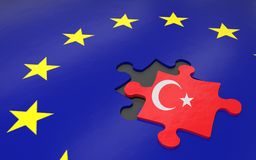 EP TURKEY RAPPORTEUR PIRI CONFIRMS WHAT HAD ALWAYS BEEN SUSPECTED: “EVEN IF TURKEY WERE A PERFECT DEMOCRACY, MERKEL AND […] SARKOZY WOULD NOT WANT TURKEY IN THE EU”
EP TURKEY RAPPORTEUR PIRI CONFIRMS WHAT HAD ALWAYS BEEN SUSPECTED: “EVEN IF TURKEY WERE A PERFECT DEMOCRACY, MERKEL AND […] SARKOZY WOULD NOT WANT TURKEY IN THE EU”
Teoman Ertuğrul TULUN 04.04.2019 -
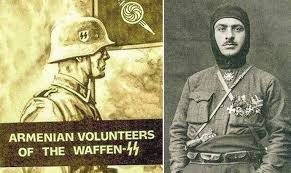 THE “NEJDEHISM” REMAINS OFFICIAL IN ARMENIA
THE “NEJDEHISM” REMAINS OFFICIAL IN ARMENIA
Maxime GAUIN 30.10.2019 -
 GEORGIA'S CROSSROADS: STABILITY AND SOVEREIGNTY
GEORGIA'S CROSSROADS: STABILITY AND SOVEREIGNTY
Teoman Ertuğrul TULUN 17.12.2024 -
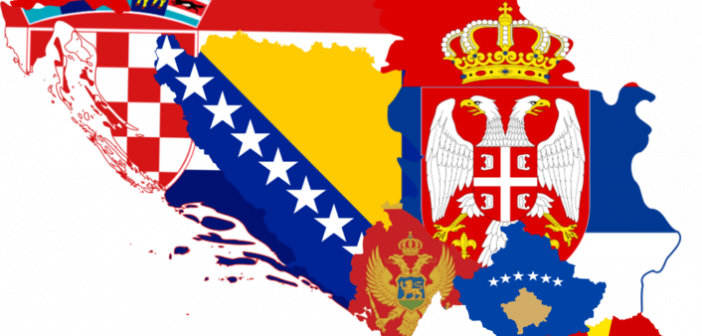 THE SPECTER OF RENEWED ARMED CONFLICTS IN THE BALKANS
THE SPECTER OF RENEWED ARMED CONFLICTS IN THE BALKANS
Teoman Ertuğrul TULUN 14.02.2017
-
25.01.2016
THE ARMENIAN QUESTION - BASIC KNOWLEDGE AND DOCUMENTATION -
12.06.2024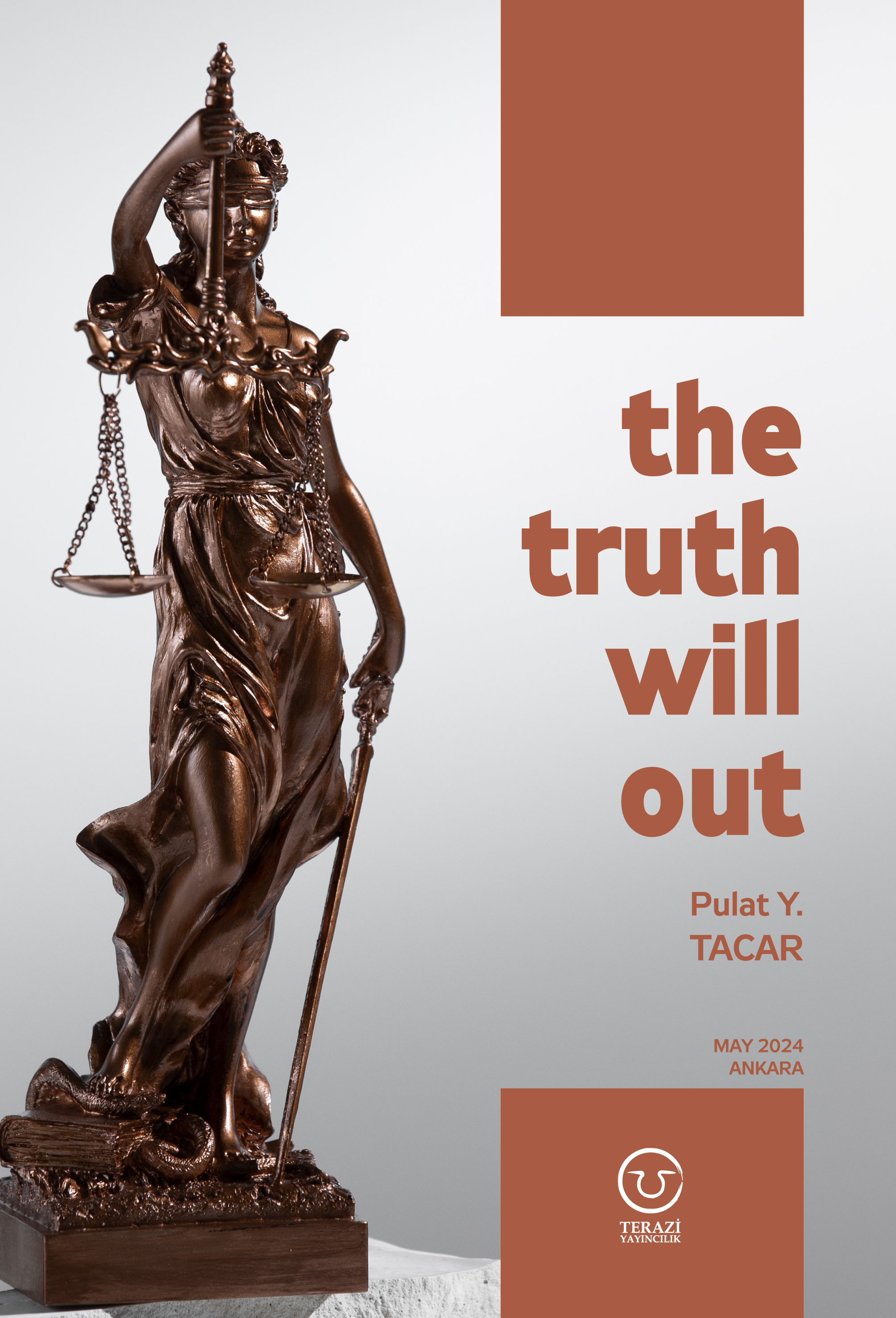
THE TRUTH WILL OUT -
27.03.2023
RADİKAL ERMENİ UNSURLARCA GERÇEKLEŞTİRİLEN MEZALİMLER VE VANDALİZM -
17.03.2023
PATRIOTISM PERVERTED -
23.02.2023
MEN ARE LIKE THAT -
03.02.2023
BAKÜ-TİFLİS-CEYHAN BORU HATTININ YAŞANAN TARİHİ -
16.12.2022
INTERNATIONAL SCHOLARS ON THE EVENTS OF 1915 -
07.12.2022
FAKE PHOTOS AND THE ARMENIAN PROPAGANDA -
07.12.2022
ERMENİ PROPAGANDASI VE SAHTE RESİMLER -
01.01.2022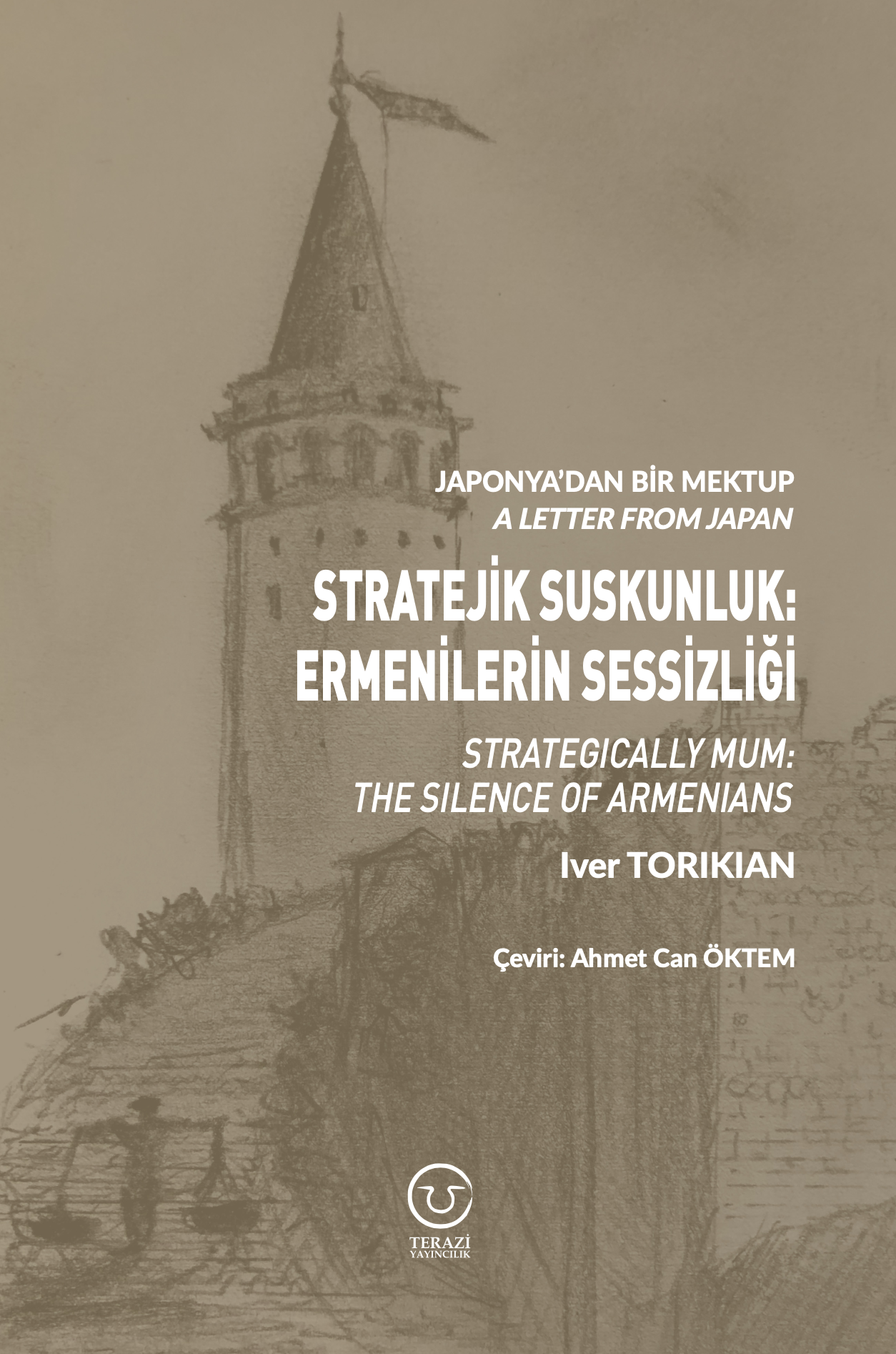
A Letter From Japan - Strategically Mum: The Silence of the Armenians -
01.01.2022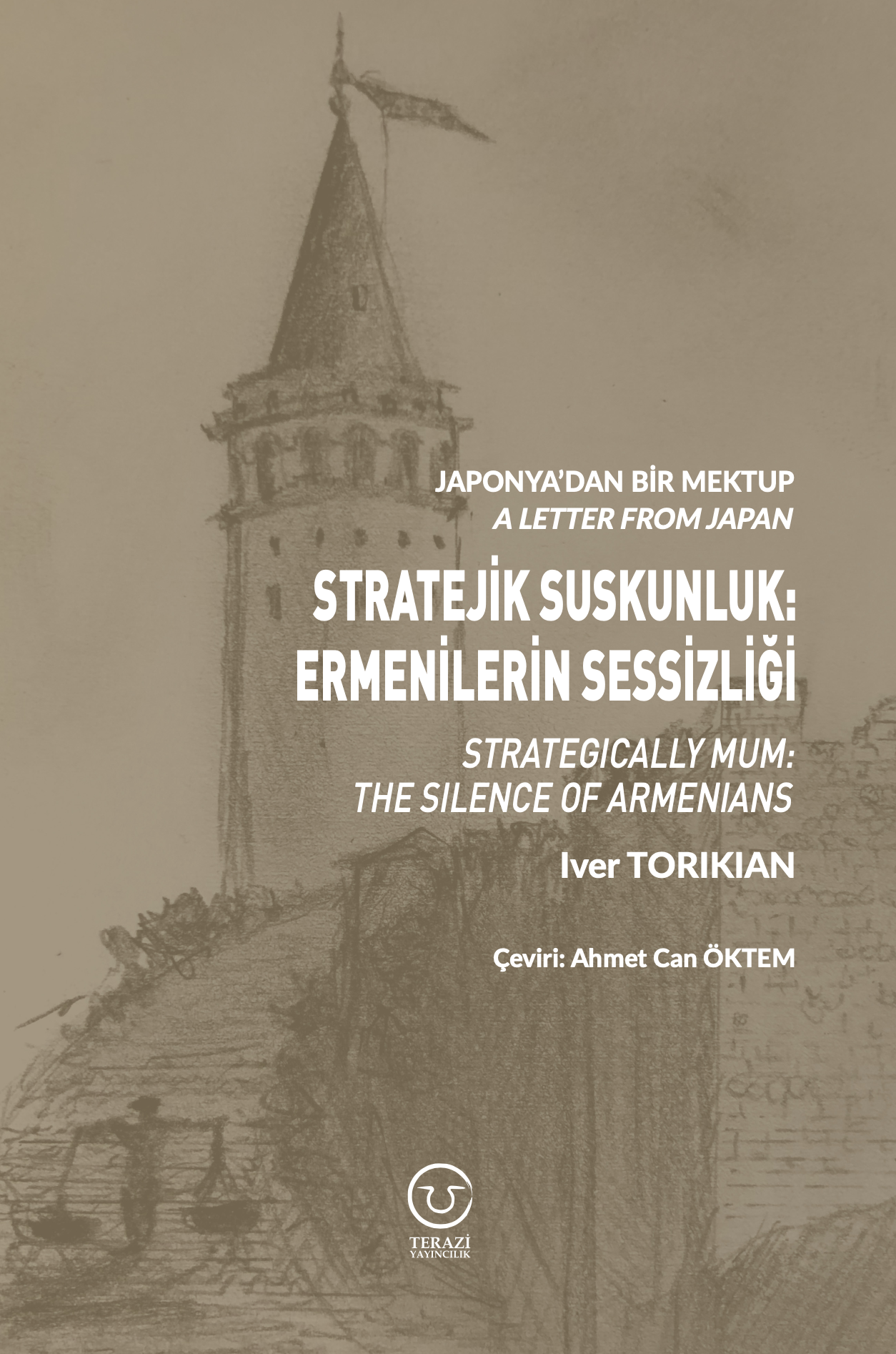
Japonya'dan Bir Mektup - Stratejik Suskunluk: Ermenilerin Sessizliği -
03.06.2020
Anastas Mikoyan: Confessions of an Armenian Bolshevik -
08.04.2020
Sovyet Sonrası Ukrayna’da Devlet, Toplum ve Siyaset - Değişen Dinamikler, Dönüşen Kimlikler -
12.06.2018
Ermeni Sorunuyla İlgili İngiliz Belgeleri (1912-1923) - British Documents on Armenian Question (1912-1923) -
02.12.2016
Turkish-Russian Academics: A Historical Study on the Caucasus -
01.07.2016
Gürcistan'daki Müslüman Topluluklar: Azınlık Hakları, Kimlik, Siyaset -
10.03.2016
Armenian Diaspora: Diaspora, State and the Imagination of the Republic of Armenia -
24.01.2016
ERMENİ SORUNU - TEMEL BİLGİ VE BELGELER (2. BASKI)
-
AVİM Conference Hall 24.01.2023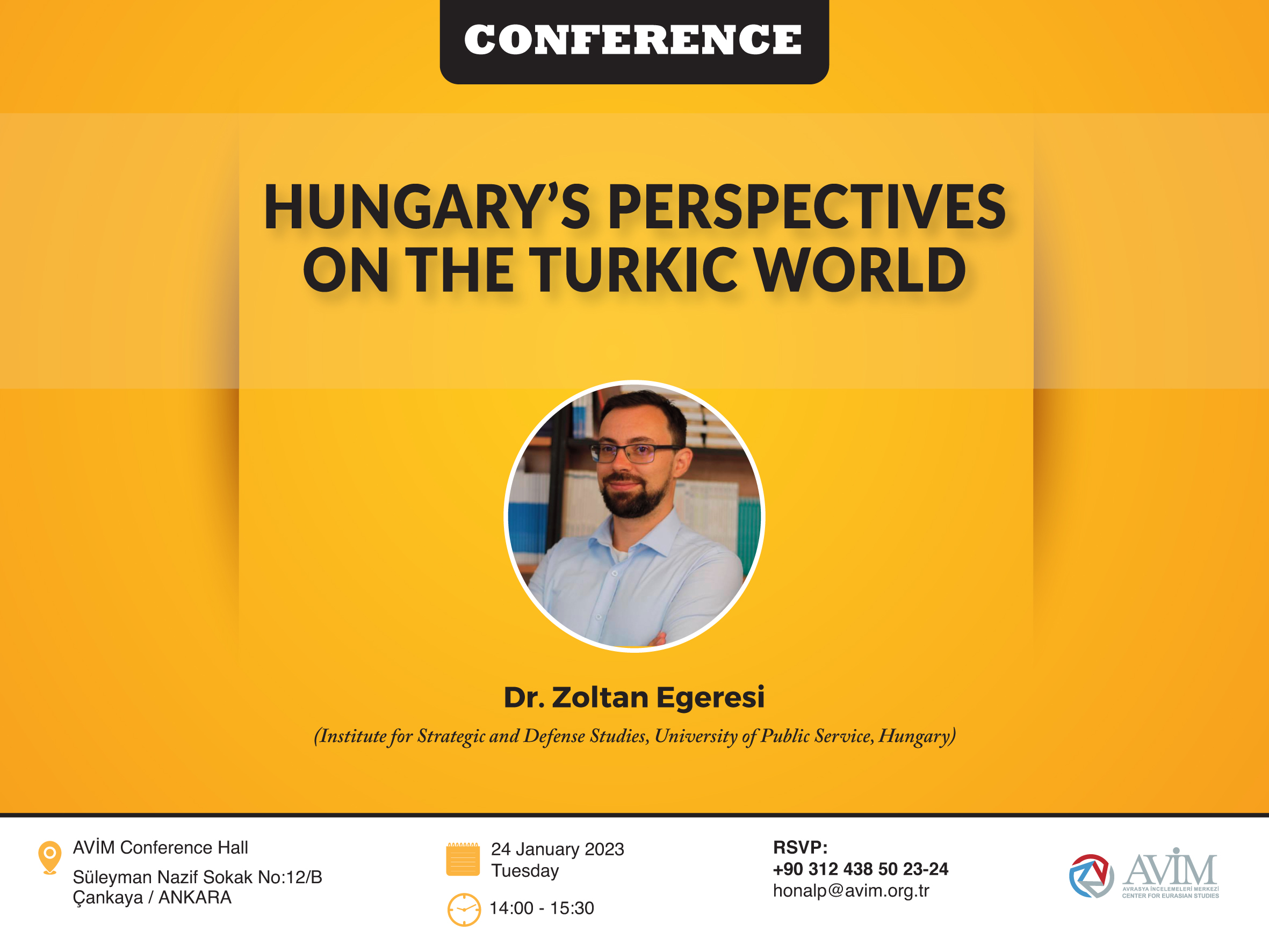
CONFERENCE TITLED “HUNGARY’S PERSPECTIVES ON THE TURKIC WORLD"








